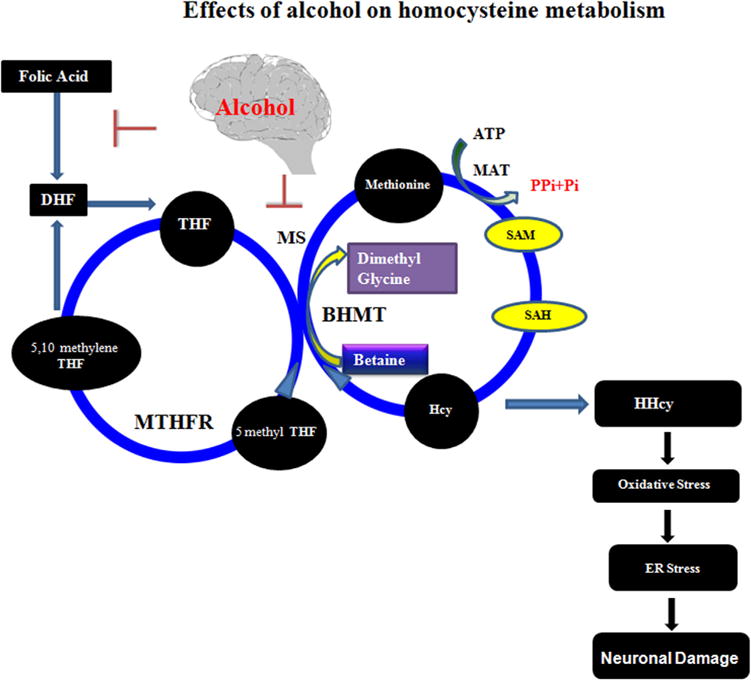Fig. 1.

Interaction of alcohol in Hcy metabolism and ER stress: Alcohol interacts with methionine synthase (MS), which is responsible for the conversion of Hcy to methionine. One of the possible reasons for HHcy during alcohol exposure may be due to inhibition of the enzyme MS by alcohol, which disallows Hcy to be converted into methionine thus leading to the condition of HHcy. On the other hand, other pathways such as transmethylation may also be affected by the inhibition of MS and may cause abrupt disturbance of S-Adenosyl methionine (SAM) and S-Adenosyl-L-homocysteine (SAH). SAM to SAH conversion is controlled by DNA methyltransferase (DNMT). If the pathway becomes disturbed, the transmethylation process also becomes disturbed. On the other hand, high Hcy also causes the low expression of cystathionine β-synthase (CBS), an antioxidant enzyme in the brain which maintains the redox system. Alcohol also interacts with folic acid pathways. Folic acid is converted into tetrahydrofolate (THF) by the enzyme dihydrofolate reductase (DHFR). THF is converted into methylene tetrahydrofolate (MTHF) by the cofactor vitamin B6. Again MTHF is transformed to THF by the key enzyme, MTHF reductase (MTHFR). In this diagram, the author speculates that alcohol may inhibit folic acid to DHF conversion and methionine synthase activity. In this mechanism, alcohol can trigger HHcy and thus affect the redox system, leading to ER stress resulting in neuronal damage that ends in impaired brain function. H2S inhibits free-radical reactions and oxidative stress thereby, alleviating ER stress, providing neuronal protection.
